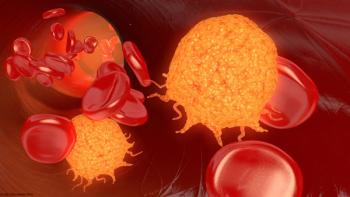
Could Scorpion Venom Component Play a Role in Glioblastoma Management?
Chlorotoxin, a component found in scorpion venom, may play a role in targeting glioblastoma cells, according to Michael Barish, PhD.
In a conversation with CancerNetwork®, Barish outlined the rationale of an ongoing phase 1 trial (NCT04214392) evaluating chlorotoxin-directed CAR T-cell therapy in a small cohort of patients with recurrent glioblastoma. Findings published in Cell Reports Medicine demonstrated the feasibility and tolerability of the novel treatment when administered to 4 patients with recurrent disease.
According to Barish, chair in the Department of Neurosciences/Developmental & Stem Cell Biology at City of Hope, prior research has shown that chlorotoxin is not toxic to humans, and that it can bind to glioblastoma cells. He and colleagues organized the trial to determine whether using chlorotoxin as a targeting element in a CAR T-cell therapy could bind to more glioblastoma cells compared with other targeting entities.
Transcript:
Glioblastoma is essentially incurable, unlike many other cancers. Part of the problem is that it’s extremely heterogeneous, both within tumors and between patients, so there’s no one target that is useful rather than, say, CD19 for blood cancers, which is pretty much a universal B-cell marker. The thing about chlorotoxin is that neurobiologists have known for a long time that this toxin will bind to most, if not all, glioblastoma cells. It is a component of scorpion venom. The scorpion venom has more than 100 components, and this is one of them. At one point, people were screening these venoms to look for specific ion channel activity, and chlorotoxin came out of that kind of screen.
The toxin itself is not toxic to people. It acts more like a chaperone for the scorpion [venom] in carrying deadly toxins into the nervous system of the brain. It’s been known that it’s not toxic in humans, but it’s been given for other reasons. The idea was that [because] we could use it as the targeting element on a chimeric antigen receptor that we would express in a T cell, it would therefore bind to glioblastoma cells in more patients than any other targeting entity.
Reference
Barish ME, Aftabizadeh M, Hibbard J, et al. Chlorotoxin-directed CAR T cell therapy for recurrent glioblastoma: interim clinical experience demonstrating feasibility and safety. Cell Rep Med. 2025;6(8):102302. doi:10.1016/j.xcrm.2025.102302.
Newsletter
Stay up to date on recent advances in the multidisciplinary approach to cancer.



















































































